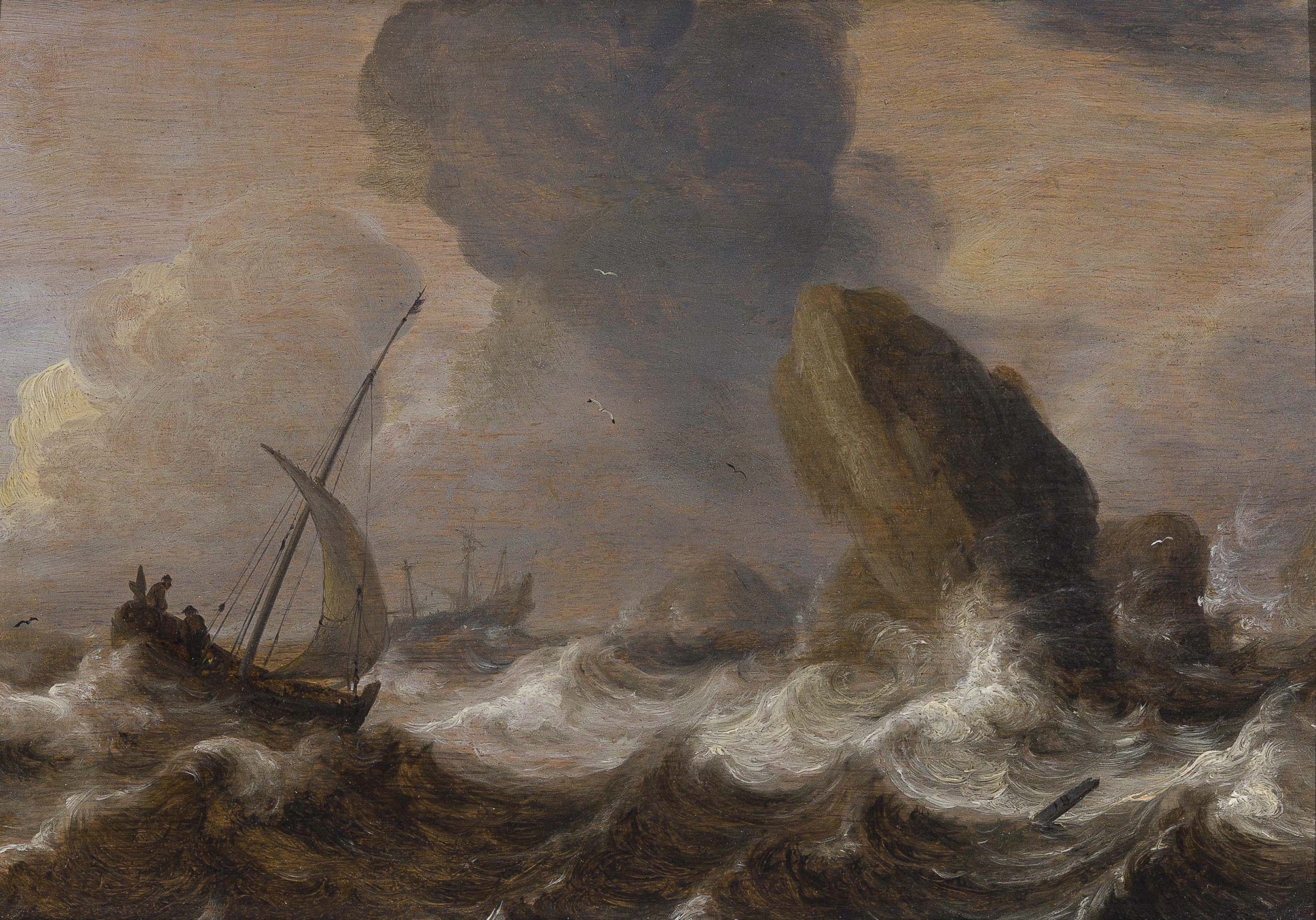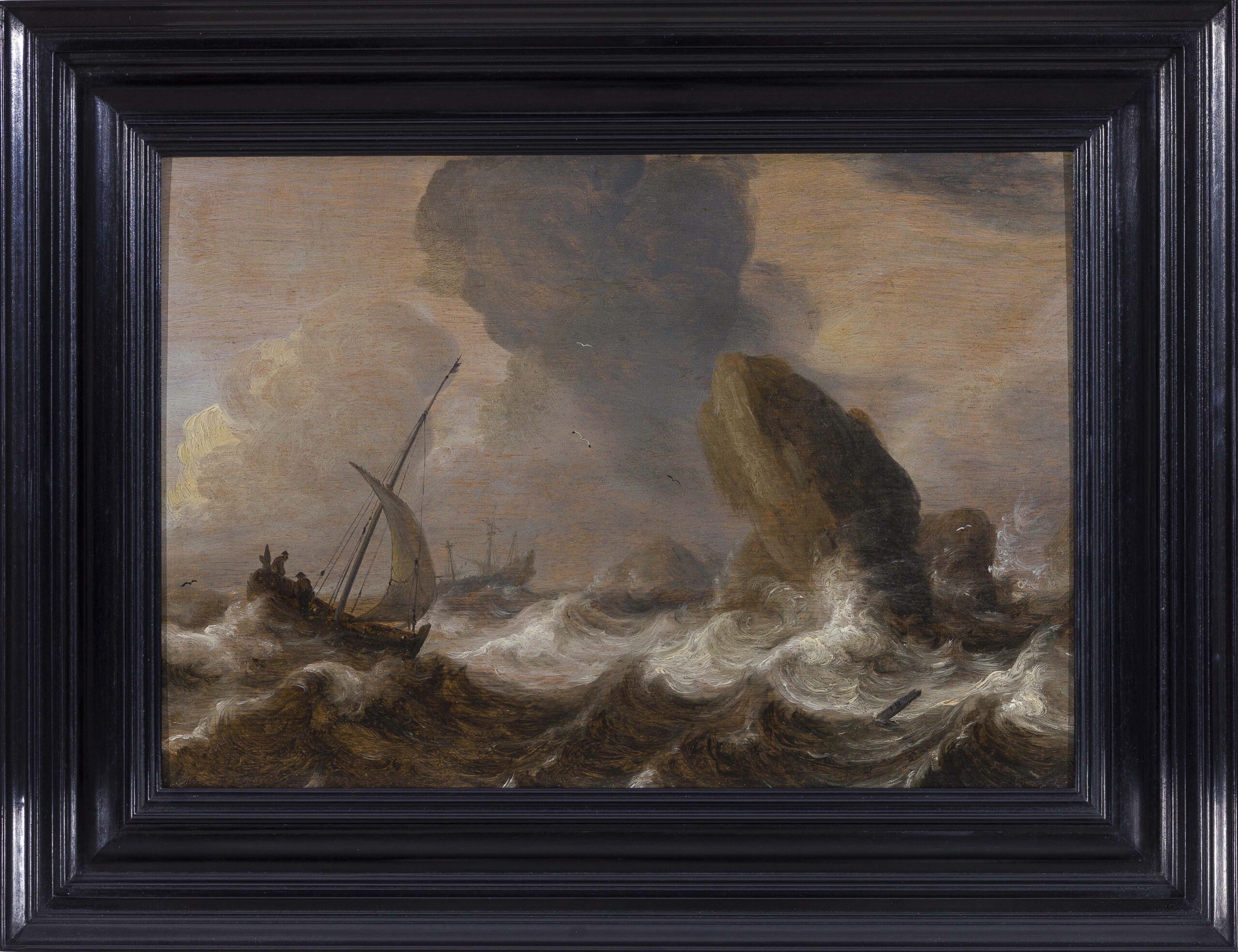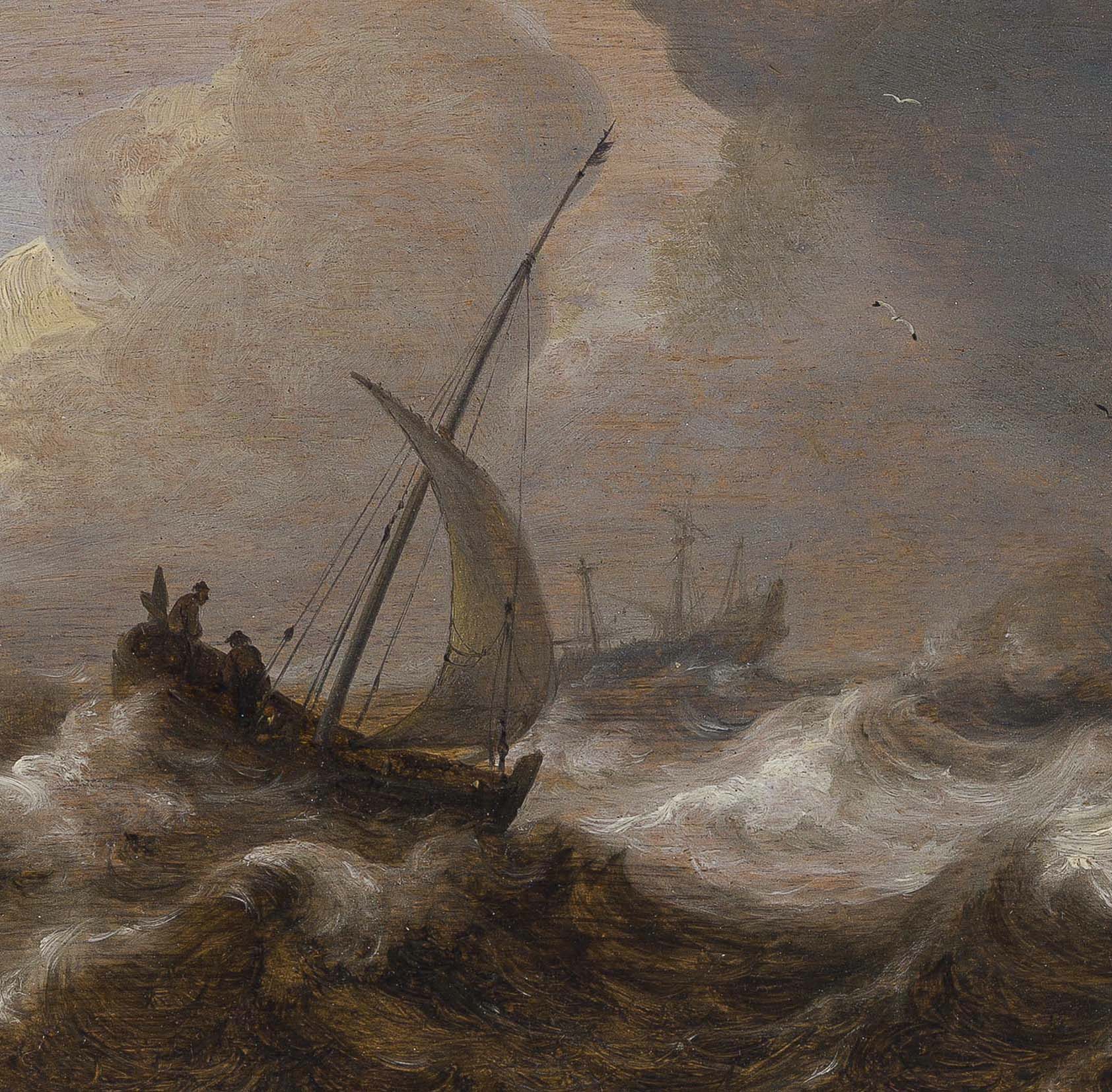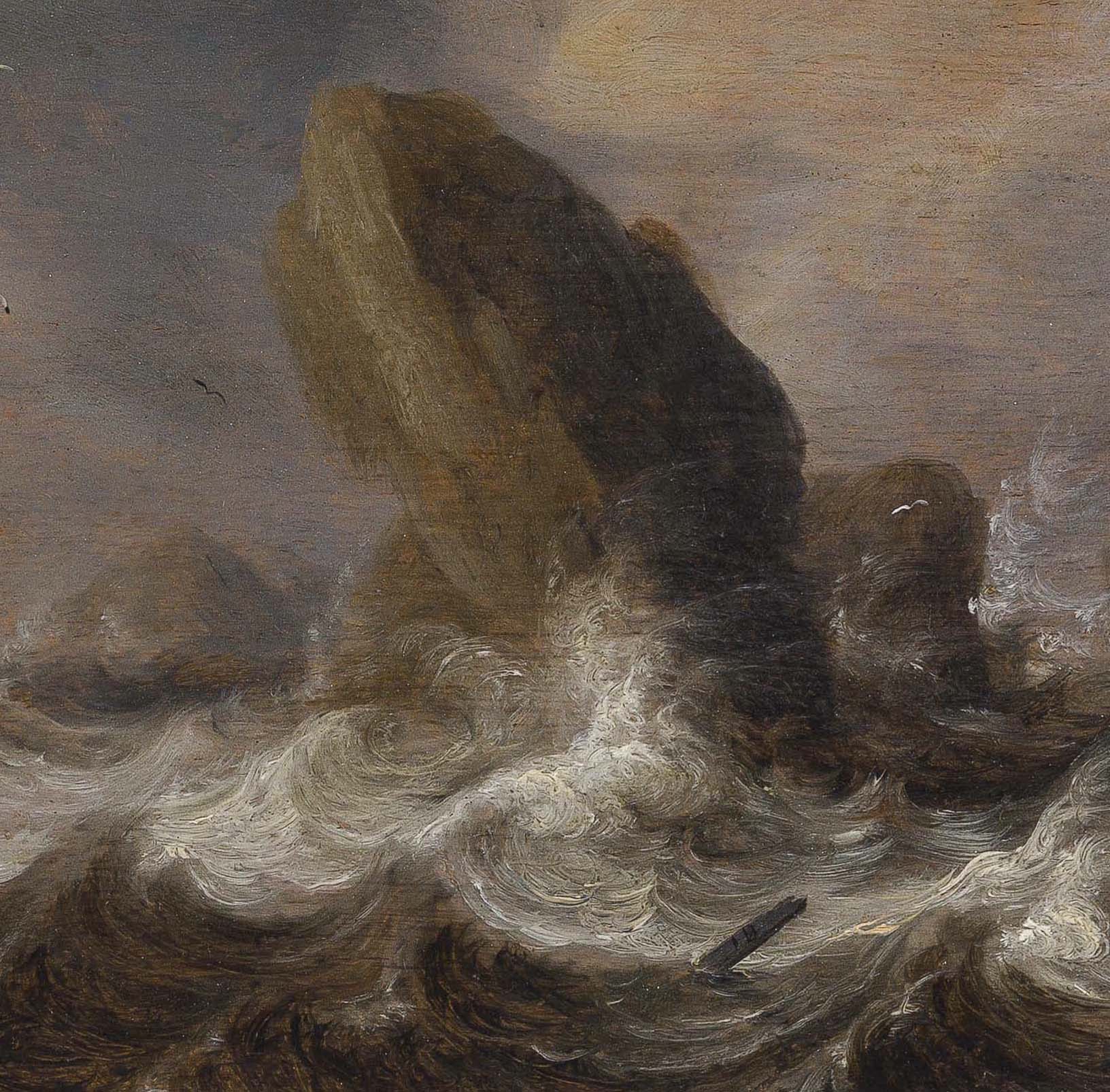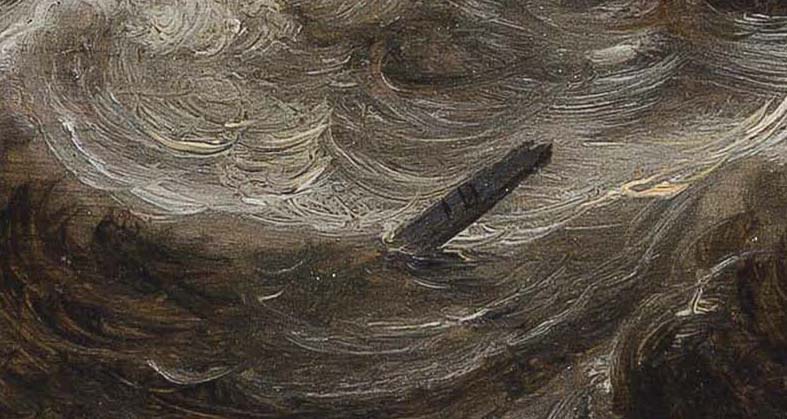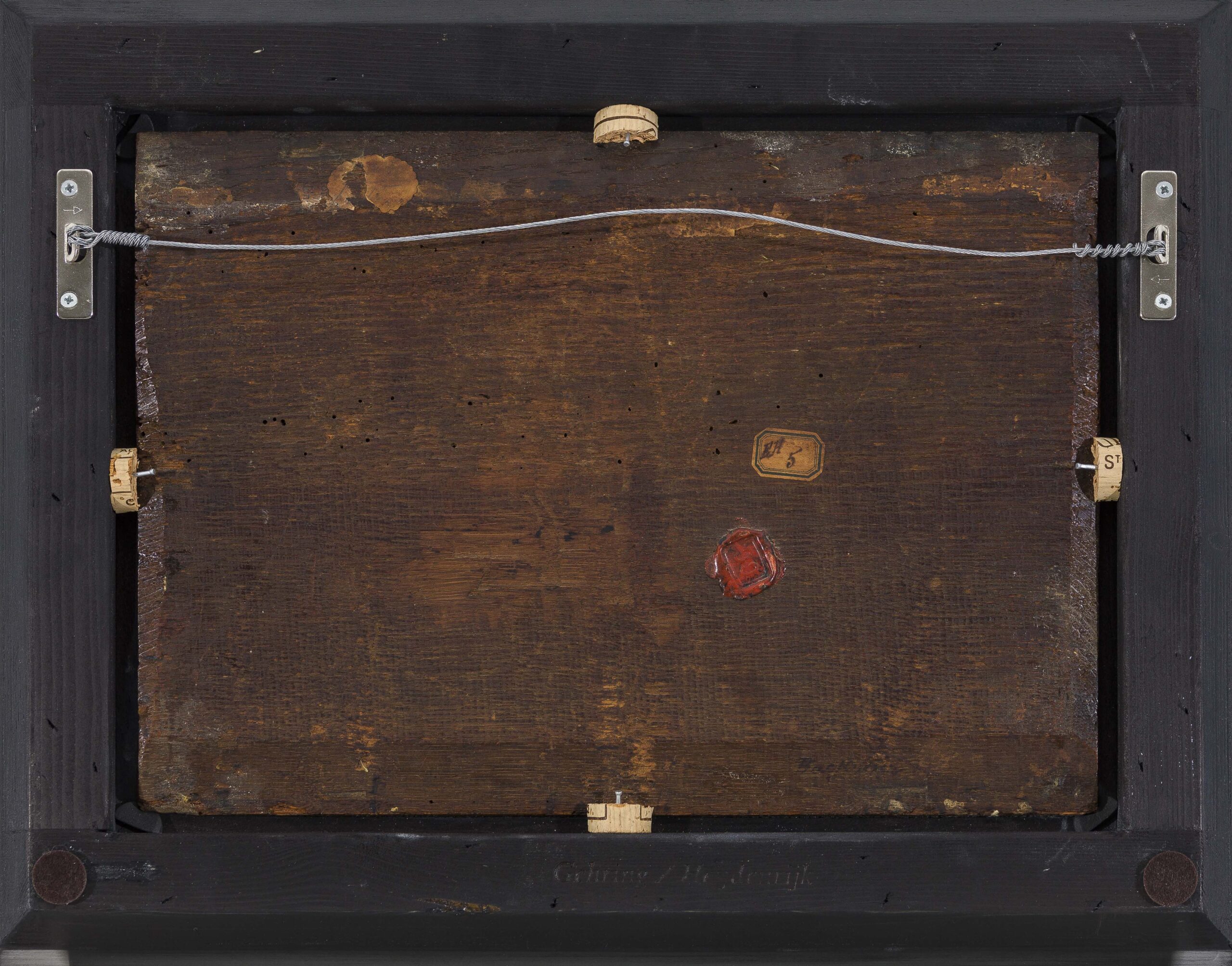JULIUS PORCELLIS (Rotterdam 1610 – 1645 Leiden)
Julius Porcellis (Rotterdam 1610 – 1645 Leiden)
Ships in a Turbulent Sea
Oil on panel, 23.2 x 32.9 cm (9.1 x 12.9 inch); presented in an ebonised frame of 17th-century model
Signed with monogram on driftwood at lower right ‘IP’1
Traces of signature on dorso, which possibly once read ‘J. Porcellis f’, scrapped away; handwritten annotation on dorso, lower centre ‘Backusen’; wax seal ‘CC’; handwritten label ‘EH / 5’
Provenance
Private collection, The Netherlands
***
Julius Porcellis was born in Rotterdam in 1610 as the son of the marine painter Jan Porcellis (1584–1632), by whom he was trained and under whose influence he remained for his whole short life.2 Even during the seventeenth and eighteenth centuries, connoisseurs of painting found it difficult to distinguish between the work of the father and son. In the words of the artists’ biographer Arnold van Houbraken (1660–1719), writing in his Groote Schouburgh of 1718: ‘Hy [Jan Porcellis] had een zoon Julius genaamt, die hem zoo na by in die Konst kwam dat’er dikwils in gedoolt word, te meer om dat hy mee als zyn Vader J.P. onder zyne stukken schreef.’3 Porcellis lived in a house on the fashionable Breestraat in Leiden and was buried in St Pancras church on 30 September 1645. In his own turn, Julius was the father of the decorative painter Johannes Porcellis van Delden.
In this beautifully preserved panel, Porcellis has depicted a turbulent sea with a pink with three fishermen approaching a rock formation, while a threemaster with lowered sails is seen in the distance – this vessel, also known as a pinnacre, has lowered the sails in order to protect them from the stormy winds. Painted with a spontaneous yet highly assured technique, the artist was able to convey the sense of a turbulent sea scene with utmost confidence. It has been observed that Julius’s paintings can be discerned from those by his father by the more elongated, less compact figures, which are more robust and with notable accents of colour in the works of Porcellis Senior, and the relatively simple depiction of the cloud formations. The present is datable around 1635, a fews years before the artist’s early demise, when Dutch marine painting was still dominated by the monochrome movement, painted in hues of grey, brown and blue – only after the middle of the century marines tended to become more colourful, with stronger colours.
Our work can for instance be compared to the artist’s painting A fishing boat in rough sea off a rocky shore in the National Maritime Museum in Greenwich (fig.).4 It can also be compared to a work in the Lakenhal Museum, Leiden.5 Paintings by Julius Porcellis are relatively rare, only a few dozen are known, including works in the Singer Museum, Laren, the Museum Boijmans van Beuningen, Rotterdam, and the Centralne Muzeum Morskie, Gdansk.
1. Possibly later altered to LB, in order to let the painting pass as a work by Ludolf Bakhuizen (1630–1708); this is further suggested by the inscription ‘Backhusen’ on the reverse of the painting.
2. For the artist, see Jeroen Giltaij and Jan Kelch, Lof der Zeevaart: de Hollandse zeeschilders van de 17e eeuw, exh. cat. Rotterdam (Museum Boijmans van Beuningen) 1996, pp. 157-165 and J. Walsh, ‘The Dutch marine painters Jan and Julius Porcellis, II: Jan's maturity and “de jonge Porcellis”’, The Burlington Magazine 116 (1974), pp. 734-745.
3. ‘He [Jan Porcellis] had a son named Julius, who approached him so well in the arts that it often caused confusion, moreover because both he and his father signed their works with J.P.’, Arnold van Houbraken, Groote Schouburgh, The Hague 1718-1721, vol. I, pp. 213-14.
4. Oil on panel, 44.4 x 68.6 cm, inv. no. BHC 0718; Walsh, op. cit., p. 742, repr.
5. Oil on panel, 30 x 38 cm, inv. no. 2068; Old Master Paintings. An illustrated summary catalogue. Rijksdienst Beeldende Kunst, The Hague 1992, p. 242, repr.
